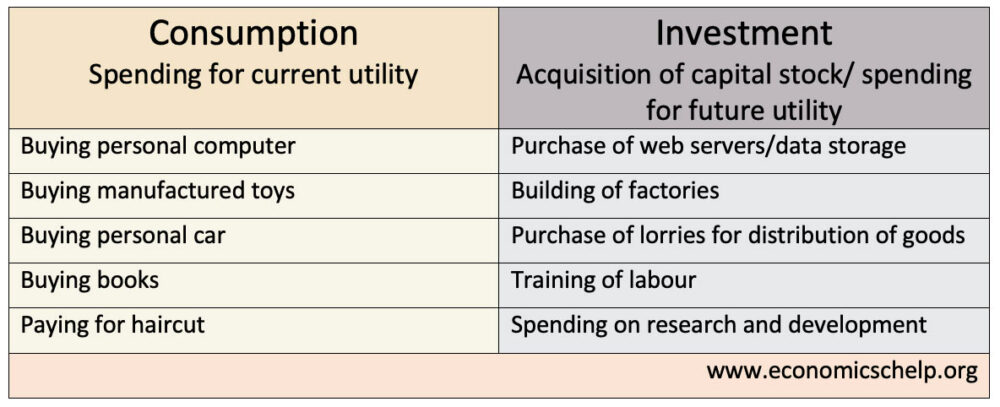- Consumption is the purchase of goods and services for the acquisition of current utility.
- Investment is expenditure on capital goods for the acquisition of future utility. Investment increases the capital stock.
Examples of the difference between consumption and investment
- A householder buys a car so that they can travel around to work and leisure activities. This is consumption
- A firm purchases a van so that it can make its deliveries to consumers.
Impact of consumption and investment
Consumption increases current utility and leads to higher living standards in the short-term. Investment will require less current consumption but can enable higher living standards in the long term.

Related
- Capital consumption – loss of capital equipment to depreciation.
- Consumption function – factors that affect consumption
- Net investment definition – total capital expenditure minus depreciation of assets.
- Factors affecting investment

